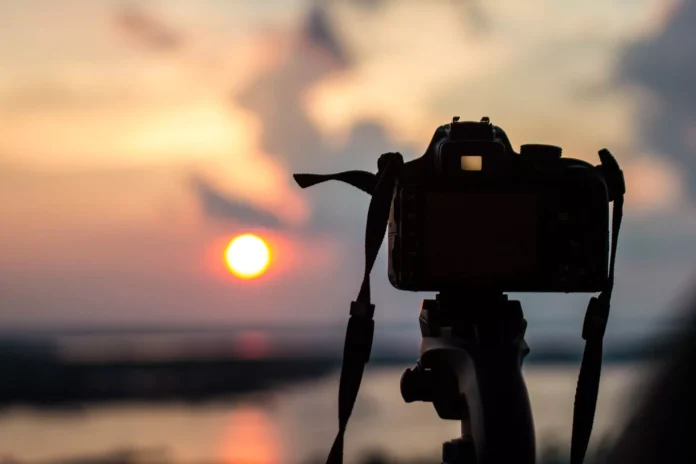For many of us, traveling is about much more than just getting away from our daily routines. It’s about exploring new places, meeting new people, and experiencing different cultures.
In essence, it’s about creating memories that will last a lifetime. But, how do you capture these moments in a way that truly reflects your experience? In this blog post, we’ll explore strategies for immortalizing your travel adventures, from choosing the right camera to experimenting with different angles and perspectives.
Whether you’re a seasoned globetrotter or planning your first trip, these tips will help you create a visual travelogue that can transport you back to your journeys anytime you wish.
1. Choose a Quality Camera

A quality camera is an essential tool for preserving your travel memories. With advancements in technology, there are a plethora of options available, from top-notch DSLR and mirrorless cameras to high-end smartphones that offer professional-grade photography features.
When selecting a camera, consider aspects like image quality, portability, and durability. Remember, the best camera for you is one that suits your needs and is comfortable for you to use.
DSLR and mirrorless cameras offer superior image quality, a wide range of interchangeable lenses, and better control over settings like aperture, shutter speed, and ISO. However, they can be bulky and may not be the best choice if you’re planning on doing a lot of hiking or moving around.
On the other hand, today’s smartphones are equipped with advanced cameras that can produce stunning photos, and they’re perfect if you want to travel light. Whichever you choose, it’s essential to familiarize yourself with its features and functions before your trip. To make your travel memories even more special, consider creating a beautiful photo book with mixbook.com.
2. Experiment with Different Angles and Perspectives

Photography is an art, and like any art, it involves a certain level of creativity. One of the best ways to make your photos stand out is by experimenting with different angles and perspectives. Don’t just take a photo straight on; try looking up from a low angle, or down from a high point. This can create a unique viewpoint and make an ordinary scene extraordinary.
Exploring different perspectives also involves moving around your subject. Don’t be afraid to walk around, kneel, or even lie down to get the shot you want. Think about the rule of thirds, which suggests dividing your image into nine equal parts and placing the subject at the intersections for a more balanced composition. Remember, rules are meant to be broken, so feel free to experiment and find what works best for you.
3. Capture the Local Culture

Travel photography is about more than just capturing beautiful landscapes; it’s about capturing the essence of a place. One of the best ways to do this is by photographing local culture and traditions. Visit local markets, festivals, and events to get a feel for the community. Be respectful and ask for permission before photographing people. Many will be happy to be part of your travel story.
Try to capture the details that make a place unique – the food, the architecture, the street art, the people. These images can tell a more profound story about your travels and help you remember the atmosphere and vibe of the places you visited.
4. Use Natural Lighting

Light is a critical component in photography, and understanding how to use natural lighting can make a significant difference in your travel photos. The golden hour, which occurs shortly after sunrise and before sunset, is widely regarded as the best time to take photos. During this time, the light is soft, warm, and diffused, creating a magical atmosphere perfect for capturing breathtaking images.
When shooting during the day, avoid direct sunlight, as it can create harsh shadows and overexposed highlights. Instead, look for an open shade or use a reflector to bounce light onto your subject. Overcast days can also provide soft, even lighting that is flattering for portraits and other subjects.
Don’t shy away from experimenting with different lighting situations, such as backlighting or side lighting. These can create interesting effects, like silhouettes or dramatic shadows, adding depth and emotion to your photos.
5. Incorporate Storytelling Elements

A compelling travel photograph tells a story. To create engaging images that evoke emotion, think about the narrative you want to convey. Ask yourself what you want your viewers to feel when they look at your photos. Incorporate elements like leading lines, framing, and depth of field to guide your viewer’s eye through the image and create a sense of movement or progression.
For example, photographing a winding road leading to a mountain can create a sense of anticipation and wonder, while capturing a local artisan at work can give insight into the cultural traditions of a place. By considering the story behind your images, you’ll create more meaningful and memorable travel photos.
6. Don’t Forget to Capture Candid Moments and Emotions

Some of the most memorable travel photos are those that capture candid moments and genuine emotions. These unplanned, unposed shots can convey the true spirit of a place and the people you encounter. To capture candid moments, be patient and observant, and always have your camera ready.
Try to blend into your surroundings and shoot from a distance to avoid interrupting the scene. Use a telephoto lens or the zoom function on your smartphone to get closer without being intrusive. Remember to respect people’s privacy and never take photos in situations where it may be inappropriate.
Conclusion
Capturing memories of our travel adventures allows us to revisit and relive those extraordinary experiences long after we’ve returned home. Through thoughtful and creative photography, we can immortalize these moments and share our unique travel stories with others.
So, equip yourself with a quality camera, experiment with various techniques, and engage deeply with the cultures and landscapes you encounter. And most importantly, savor every moment of your journey, because in the end, it’s not just about capturing memories—it’s about creating them.






